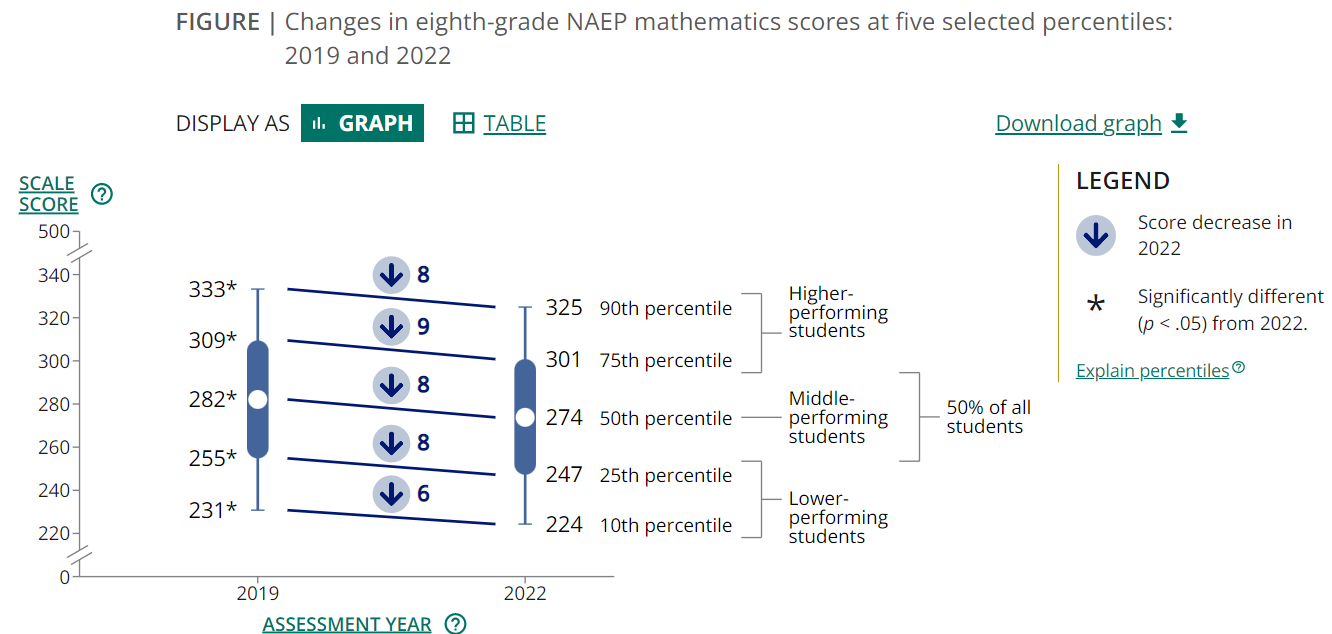
Students who are taking Algebra 1 and those students who are on-track to take Algebra 1 in middle school are usually higher-performing students. They usually have a proven track record of success and are very rarely, if ever, targeted for remediation, but the data shows they are behind where students of their same grade were just 3 years ago. District superintendents need to look toward programs like CollegeReadyMath that have a proven track record of achievement gains for middle school students. In my own teaching, both before and throughout the pandemic, I have found that most of my higher-performing students thrive with online programs and there is evidence from NAEP and other sources to support this happening in mathematics classrooms across the nation. The CollegeReadyMath supplemental algebra programs can help students to establish a foundation in essential algebraic concepts. In this program, students can learn concepts one at a time at home or at school. Online programs like this one allow for students to fill in gaps in their learning and allow for teachers to tailor supplemental lessons to student needs – school districts need to make them available to students motivated to use them.
In this blog, I have suggested that school districts expand their existing programs of support and add online programs (i.e. CollegeReadyMath) to help students make gains in their mathematical performance. Now I am going to suggest that school districts might want to help teachers “sharpen their pedagogical practices” and focus on the mathematical identities of their students. Deborah Pert recently delivered a 10-minute talk NCTM’s 2022 Shadow Con entitled “Mathers Gonna Math.” She said:
What if we reframe our thinking and reframe our language, and we make sure that there is a strong, solid foundation in mathematics for everyone? Maybe we’ll have less math trauma, less math shame, less math anxiety, less math avoidance. And maybe we’ll have children and adults developing into competent Mathers who are willing to face problem solving with confidence and persevere in solving those problems.
Over the past two years, there has been a trend in middle and high schools across the country to engage students in socio-emotional learning. School districts need to provide training for middle school mathematics teachers to help meet the specific socioemotional needs of their “mathers.” Pert says we need to establish places where we are “celebrating all the ways we are mathing together all the time” and teach our students that “mathing is something that never ends.” Our middle school students lead very emotional lives. While this can, on occasion, make teaching them a challenge, it is also a strength that we can tap into to help them grow as people and as students of mathematics. Students will continue to use many of skills they learn in mathematics throughout their school careers and beyond. This week during class, I learned that one of my students routinely divides decimals at his automotive internship while he is doing the calculations needed to rebuild an engine. He said that he prefers to do the long division by hand because it gives him time to “think about whether the calculations make sense.” Superintendents and school leaders need to take immediate action to meet the mathematical needs of their middle school students so that they can succeed in their lives and make sense of the world around them.







